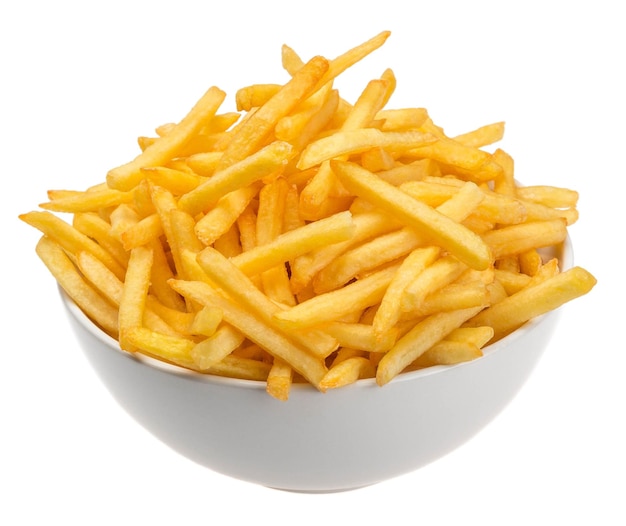Quick Read
The History of Corn:
Corn, also known as maize, is a versatile and essential crop with a rich history. Here are 14 fascinating facts you probably didn’t know about the origins, development, and impact of corn:
Ancient Beginnings:
Corn traces its roots back over 10,000 years to the Tehuacán Valley in Mexico. Early humans discovered and cultivated wild corn teosinte, gradually developing it into the modern maize through selective breeding.
First Fruits:
The ancient Mexicans held corn in high regard, believing it was a gift from their gods. They celebrated the first fruits every year with grand feasts and rituals.
The Three Sisters:
The Native Americans adopted corn as a staple crop and combined it with beans and squash to create the “Three Sisters” system, where each plant provided support, nutrition, or protection for the others.
The Corn Belt:
Europeans introduced corn to Europe in the 16th century, but it didn’t gain popularity until colonial America. The Corn Belt region, spanning from the Great Lakes to the Mississippi River, was named for its heavy corn production.
5. Corn in Colonial America:
By the late 17th century, corn had become a staple food source for early settlers. They used it to make hominy, grits, and mush.
6. The Industrial Revolution:
During the Industrial Revolution, corn became a primary raw material for various industries, including textiles and paper manufacturing.
7. Corn Processing:
The late 1800s saw the development of corn refining processes, including wet milling and dry milling, which led to the production of various corn derivatives like corn syrup, cornstarch, and cornmeal.
8. Corn in the Modern World:
Corn is now a global commodity, with over 1.2 billion hectares of land dedicated to its cultivation worldwide.
9. Corn in Food Production:
Corn is used extensively in modern food production, from snack foods and cereals to ethanol fuel and livestock feed.
10. Corn in Modern Agriculture:
Modern corn agriculture relies heavily on genetic engineering and intensive farming practices, leading to increased yield and resistance to pests.
1Corn Nutrition:
While corn contains important nutrients like fiber, protein, and essential vitamins and minerals, it is also high in sugar and calories.
1Corn’s Environmental Impact:
Corn agriculture has a significant impact on the environment, contributing to water usage, soil erosion, and greenhouse gas emissions.
1Corn in Modern Society:
Corn remains a fundamental part of modern society, shaping food production, agriculture, and even fuel industries.
1Corn in the Future:
As the world’s population continues to grow, corn’s role in food production, sustainability, and innovation will continue to evolve.
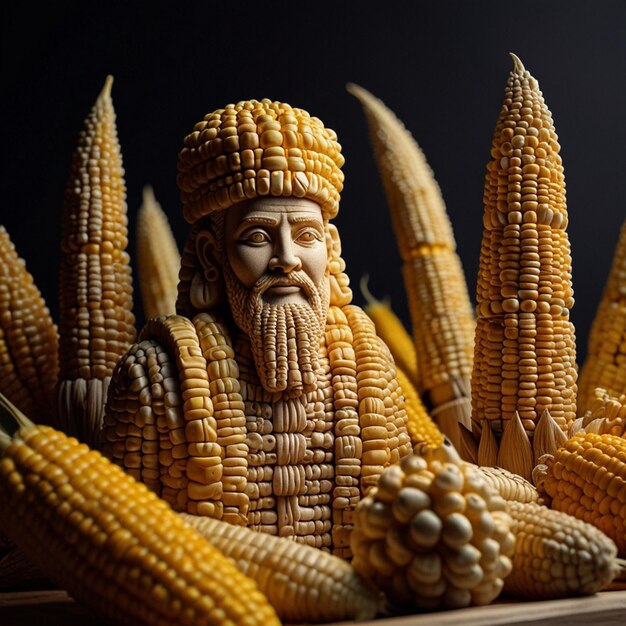
Discovering the Fascinating History of Corn: 14 Surprising Facts
Corn, also known as maize, has been a staple food source for human civilization for over 10,000 years. This versatile grain originated in Central America and has since spread across the globe, becoming a fundamental component of many diets and industries. In this engaging exploration, we’ll delve into 14 lesser-known facts about the captivating history of corn that are sure to intrigue and inspire.
The Birthplace of Corn: Mesoamerica
1. Corn was first domesticated around 9,000 BC in the Mesoamerica region, which encompasses present-day Mexico and Central America.
The Early Cultivation of Corn
2. The earliest forms of corn were not the same as what we know today. They were small, hard seeds with little nutritional value. It wasn’t until around 4,000 BC that corn began to be selectively bred for larger and more nutritious kernels.
The Role of Corn in Ancient Civilizations
3. The Mayans and Incas, two ancient civilizations in Mesoamerica, revered corn as a gift from their gods. They used it for food, medicine, and religious rituals.
Corn’s Journey Across the Atlantic
4. The first European settlers in the Americas didn’t initially take much interest in corn. It wasn’t until the late 1500s that it began to spread throughout Europe due to its ease of cultivation and adaptability to various climates.
Corn in Colonial America
5. By the mid-1600s, corn had become a staple food in Colonial America, particularly among Native American communities and enslaved Africans.
The Industrial Revolution and Corn
6. The industrial revolution brought about new uses for corn, including the production of ethanol as a fuel source and the creation of corn syrup in the late 1800s.
Corn’s Impact on Modern Agriculture and Nutrition
7. Corn is now used extensively in modern agriculture as both a food source and an ingredient in various industries. It’s also a significant contributor to the global food supply and provides essential nutrients like fiber, vitamins B and C, magnesium, phosphorus, and selenium.
The Diversity of Corn: Over 100 Varieties
8. There are over 100 different varieties of corn, each with unique characteristics such as color, size, and taste.
The Cultural Significance of Corn in Modern Times
9. Today, corn is more than just a food source—it’s an integral part of many cultures and traditions around the world.
The Future of Corn: Sustainability and Innovation
10. As the world population continues to grow, corn plays an essential role in ensuring food security and sustainability through innovative farming practices and technological advancements.
Corn as a Feed Source: Livestock Production
11. Corn is also used extensively as a feed source for livestock production, providing nutrients for animals that produce meat, dairy, and eggs.
The Environmental Impact of Corn Production
12. While corn is essential for human and animal nutrition, its production can have negative environmental consequences such as deforestation, water usage, and the overuse of pesticides and fertilizers.
The Role of Corn in Scientific Research
13. Corn is a vital subject of scientific research, with ongoing studies focusing on genetics, breeding, and sustainability to improve its production and nutritional value.
The Artisanal Corn Revival: Heirloom Varieties
14. In recent years, there has been a resurgence of interest in heirloom corn varieties—old and rare types of corn that offer unique flavors, textures, and colors. These artisanal crops are being revived and celebrated for their cultural significance and potential health benefits.
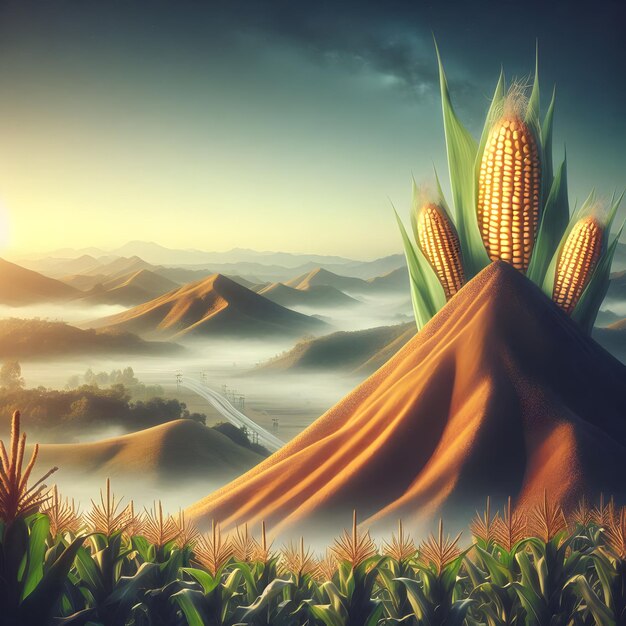
Origins of Corn: Ancient Mexico (circa 7000 BC)
Zea mays, commonly known as corn, is a botanical grain native to the Americas. This
amazing cereal
is part of the Poaceae or grass family, and it shares some relationship with other important
cereal grains
, such as wheat, rice, and oats. However, unlike these cereals, corn is the only major grain that originated in the Americas.
Corn’s earliest known domestication dates back to the
Tehuacán Valley
, located in Mexico’s Puebla state, around 7000 BArchaeological evidence suggests that ancient peoples living there began to cultivate corn from its wild ancestor,
Zea mexicana
. Over the millennia, these early farmers selectively bred corn for desirable traits like increased size, better flavor, and easier husking. By 3500 BC, corn had become a staple food in Mesoamerican cultures.
I The Spread of Corn: From Ancient Mexico to the World (circa 2500 BC – AD 1492)
Corn, one of the world’s most important staple foods, has an intriguing history that spans thousands of years and continents. This narrative begins in Mesoamerica, where corn was first domesticated around 2500 BC.
The pre-Columbian spread of corn throughout Mesoamerica and North America:
The ancient civilizations of Mesoamerica, including the Olmecs, Mayans, and Aztecs, played a significant role in the spread of corn. Through trade networks and cultural exchange, corn disseminated from its birthplace to various indigenous peoples across the region. As early as 1500 BC, evidence suggests that corn was cultivated in present-day Mexico and the southwestern United States. With time, it spread northward, reaching as far as Canada by the time European explorers arrived.
Trade networks and cultural exchange between indigenous peoples:
The exchange of goods and ideas among the indigenous populations facilitated the spread of corn. As people migrated or established new settlements, they brought corn seeds with them. These movements enabled corn to adapt to diverse climates and geographies, making it a resilient and versatile crop that thrived in various conditions.
Corn’s arrival in Europe (circa 1493):
The European encounter with corn began around 1493 when Christopher Columbus returned from his first voyage to the Americas. He brought back corn seeds, which were initially met with curiosity and skepticism in Europe. However, as corn proved to be an adaptable crop that could thrive in various European climates, it gradually became a staple food in many regions.
Columbus and corn: The Columbian Exchange:
Columbus’ voyages marked the beginning of the Columbian Exchange, a transatlantic exchange of goods, people, and ideas between Europe and the Americas. Corn was among the many New World commodities that significantly impacted European agriculture and society.
Corn’s journey to Africa (circa 1500):
The story of corn doesn’t end with Europe; it continued to travel and adapt. Around 1500, corn made its way to Africa as part of the Columbian Exchange. Early trade relationships between Africa and Europe led to the exchange of various crops, including corn. In Africa, corn took root and transformed agricultural practices.
Early trade relationships between Africa and Europe:
European explorers and merchants established trading posts along the African coast, exchanging European goods for African commodities. Corn was one of the crops that found a new home in Africa and contributed to its agricultural development.
The importance of corn in the development of African agriculture:
Incorporating corn into their agricultural systems allowed Africans to improve food production, increase yields, and diversify their diets. Corn became a crucial component of African agriculture, especially in regions where other staple crops like sorghum or millet didn’t grow as effectively.
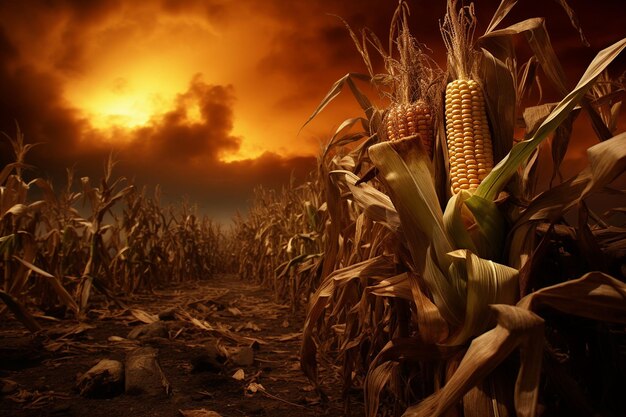
Corn’s Role in European Colonization (circa 1500 – 1900)
Corn as a Staple Food during the Colonization of America
Settlers’ Dependence on Corn for Survival: As European settlers began to colonize North America, they discovered the native people’s cultivation and reliance on corn as a staple food source. The newcomers quickly adopted this crop due to its high nutritional value, ease of cultivation, and versatility. Corn became a vital element in the settlers’ survival strategy.
The Importance of Corn in the Development of North American Agriculture: Corn played a significant role in the evolution of agriculture in North America during the colonial period. The crop’s adaptability to various climate conditions and ease of cultivation made it a cornerstone of agricultural production. Corn’s widespread adoption facilitated the growth of thriving settlements, enabling the European colonizers to establish a strong agricultural base.
Corn’s Role in the Atlantic Slave Trade
Forced Labor and the Cultivation of Corn on Plantations: The Atlantic slave trade brought a massive influx of enslaved Africans to the Americas, who were forced to work on plantations to grow crops like corn. Corn became an essential cash crop for these plantation economies, with its cultivation requiring large labor forces to tend to the fields.
The Impact of Corn on Native American Populations
The Forced Adoption of Corn Monoculture: European colonizers imposed corn monoculture, or the cultivation of a single crop, on many Native American communities. This forced adoption led to a reliance on corn as the primary food source, which had both positive and negative consequences.
The Devastating Effect on Traditional Agriculture and Food Sources: The imposition of corn monoculture disrupted the traditional agricultural practices of indigenous peoples, causing a significant decline in the diversity and sustainability of their food sources. Over-reliance on corn also made Native American populations vulnerable to famine during periods of crop failure or disease.
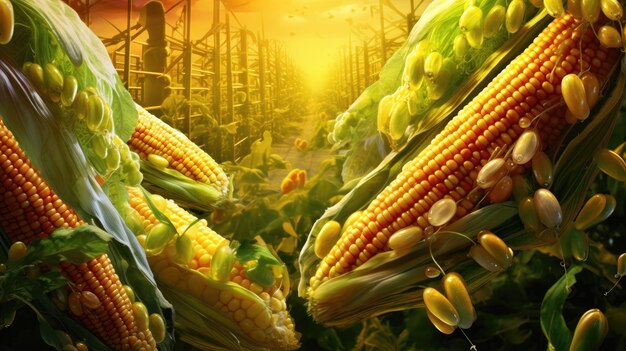
Corn in the Modern Era (circa 1900 – Present)
The Green Revolution: High-yield corn varieties and the use of synthetic fertilizers, pesticides, and irrigation
The Green Revolution, which began in the mid-20th century, brought about a significant transformation in corn production. High-yield varieties of corn were developed through plant breeding and genetic engineering, enabling farmers to produce more grain per acre. However, this productivity boom came with controversies. The widespread use of synthetic
Corn’s role in the industrial food system
Production: With the Green Revolution, corn became a staple crop in the industrial food system. Monoculture farming practices, which focus on growing a single crop over large areas, led to increased production and efficiency but also contributed to issues like nutrient depletion and soil erosion. Processing: Corn is used in various processed food products, such as sweeteners, texturizers, and binders. This extensive use has led to concerns over the health implications of consuming large quantities of processed foods containing corn derivatives.
Corn as a biofuel: Ethanol and other applications
Ethanol: The search for renewable energy sources has led to the production of corn-based ethanol, a biofuel that can replace some fossil fuels in transportation. However, challenges remain: the environmental impact of growing corn for ethanol production is significant due to water usage and potential negative effects on soil health. Additionally, the energy balance of producing corn ethanol versus gasoline is not always favorable.
Other applications:
Beyond ethanol, corn has found use in other industries. Corn syrup is used as a sweetener in various food products, and cornstarch can be converted into plastics, adhesives, and biodegradable materials. These applications contribute to the economy but also increase overall demand for corn.
The future of corn
As we move into the future, it is essential to consider sustainable solutions for corn production. This includes using regenerative agricultural practices like no-till farming and agroforestry, promoting biodiversity in cropping systems, and developing new technologies to enhance productivity without negatively impacting the environment. Additionally, ongoing research into alternative sources of biofuels, such as cellulosic ethanol from agricultural waste or algae-based biofuels, could provide more sustainable options for energy production.
Conclusion
From the Green Revolution to its role in industrial food and bioenergy production, corn has undergone significant transformations over the past century. While these developments have brought about numerous benefits, they also raise concerns regarding environmental sustainability and potential health implications. As we look to the future, it is essential that we find ways to produce, process, and use corn in a sustainable and responsible manner.
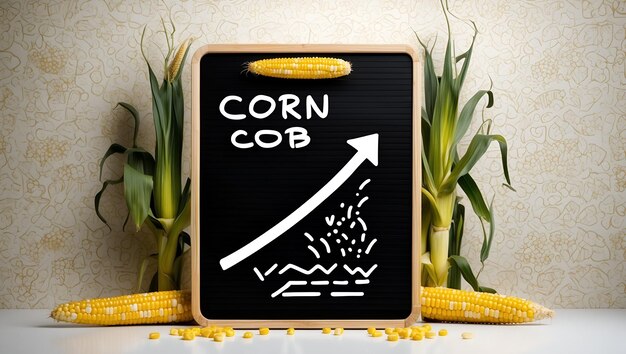
VI. Conclusion
As we reach the end of this captivating journey through corn’s 14 fascinating facts, it’s essential to take a moment and appreciate the rich history and continuous impact this versatile crop has on our world.
Fact 1:
Corn originated in Mexico around 7000 BC, and
Fact 2:
its domestication marked the beginning of agriculture as we know it.
Fact 3:
Corn is a C4 plant, which gives it a competitive edge in photosynthesis compared to other plants.
Fact 4:
Corn is one of the world’s most genetically modified organisms, with over 90% of U.S. production being GM corn.
Fact 5:
Corn is an essential ingredient in various industries, including food, fuel, and plastics.
Fact 6:
Corn syrup, derived from corn, is a significant sweetener in many processed foods and beverages.
Fact 7:
Corn’s versatility is evident in its various forms, such as popcorn, hominy, and grits.
Fact 8:
Corn plays a crucial role in the U.S. economy as the leading agricultural export, bringing in over $20 billion annually.
Fact 9:
Corn is also a major contributor to greenhouse gas emissions, making it essential to explore sustainable farming practices like regenerative agriculture.
Fact 10:
Corn plays a vital role in the livestock industry as a primary feed source.
Fact 11:
Corn is susceptible to numerous pests, diseases, and environmental stressors that impact its yield.
Fact 12:
Corn’s high water requirement makes it a significant user of irrigation resources, which is crucial to consider in areas with limited water availability.
Fact 13:
Corn’s future holds promising advancements in biotechnology, such as developing corn varieties with improved nutritional content and drought tolerance.
Fact 14:
Corn’s influence extends beyond our borders, with countries like China becoming major corn importers and producers.
As we reflect on these fascinating facts, it’s clear that further exploration and learning about corn’s history and its ongoing impact on our world is not only worthwhile but essential. Let us continue to engage in conversations surrounding sustainable farming practices, the importance of corn’s role in various industries, and the potential for future advancements in this remarkable crop.




